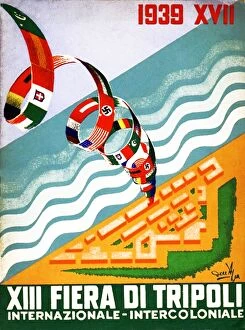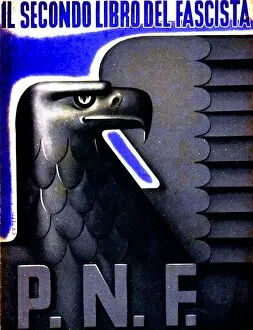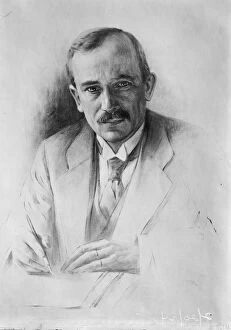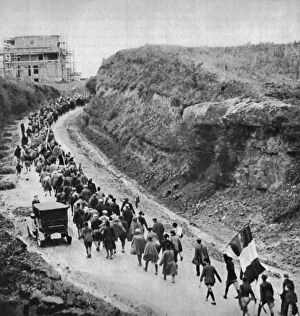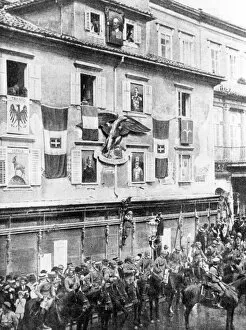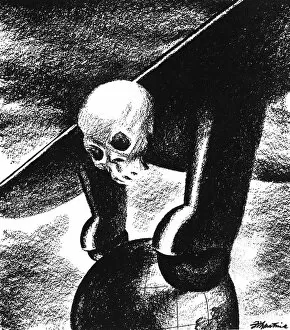Fascist Collection (#7)
"Fascist: Unveiling the Dark Shadows of History" In the early 20th century, amidst a backdrop of political turmoil and ideological clashes
For sale as Licensed Images
Choose your image, Select your licence and Download the media
"Fascist: Unveiling the Dark Shadows of History" In the early 20th century, amidst a backdrop of political turmoil and ideological clashes, fascist movements emerged across Europe. Metropolitan Police officers stood guard during tense moments like the Battle of Cable Street, where anti-fascist protesters clashed with Oswald Mosley's British Union of Fascists. Across borders, the Spanish Civil War became a battleground between democracy and fascism. The rallying cry "Viva España. " echoed through streets as propaganda posters adorned walls, depicting heroic fighters defending their land. Meanwhile, Albania's capital Tirana boasted Skanderbeg square with buildings proudly displaying Italian Fascist style architecture. The Cable Street demonstration in 1936 saw thousands united against fascism in London's East End. Among those opposing this ideology were Diana and Nancy Mitford - sisters who would later find themselves entangled in its allure. Gabriele d'Annunzio's audacious rule over Fiume (now Rijeka) showcased how charismatic leaders could captivate masses under their spell. Even sports became a platform for fascist ideals to be showcased on an international stage. The Italian national football team represented Mussolini's regime at the Berlin Olympics in 1936, using sport as a tool for propaganda and projecting an image of strength and unity. Yet it was not just adults who fell prey to these ideologies; young people from fascist Italy were indoctrinated into believing in its principles through colorful lithographs that romanticized their cause. Architecture also played a role in promoting fascist aesthetics; Ponte della Libertà (Bridge of Liberty) spanning Venice served as a symbol of Mussolini’s grand vision for Italy. However, not all embraced this dark chapter willingly. Unity Mitford arrived wrapped in blankets on Folkestone quayside after being infatuated by Nazi Germany but soon realized the horrors she had aligned herself with. Sir Oswald Mosley himself was immortalized on canvas in 1925, his charismatic presence captured for posterity.


